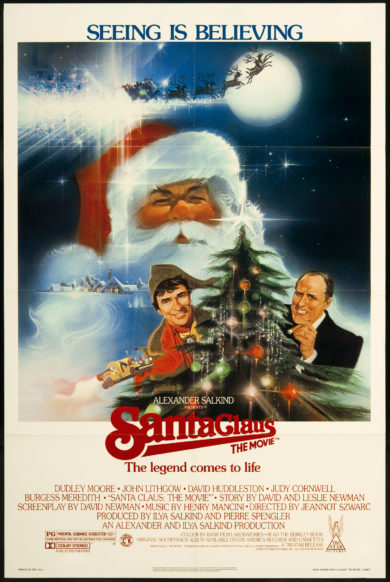 The hit Christmas movie is not dissimilar to the hit Christmas song: something that can reap enormous rewards. Just ask Mariah Carey, whose interminable 1994 song “All I Want for Christmas is You” has become a holiday anthem on yearly playlists, blared on seemingly endless rotations alongside holiday standards like “Winter Wonderland” and “Have Yourself A Merry Little Christmas.” Carey’s tune is also the most recent Christmas song to enter the holiday rotation, which hasn’t stopped music artists from turning out Christmas albums each year in hopes of replicating its success.
The hit Christmas movie is not dissimilar to the hit Christmas song: something that can reap enormous rewards. Just ask Mariah Carey, whose interminable 1994 song “All I Want for Christmas is You” has become a holiday anthem on yearly playlists, blared on seemingly endless rotations alongside holiday standards like “Winter Wonderland” and “Have Yourself A Merry Little Christmas.” Carey’s tune is also the most recent Christmas song to enter the holiday rotation, which hasn’t stopped music artists from turning out Christmas albums each year in hopes of replicating its success.
The hit Christmas movie is not dissimilar to the hit Christmas song: something that can reap enormous rewards.
The film world is a bit more forgiving. Christmas themed movies ranging from DIE HARD to SCROOGED have found new life on television in recent years, which have also seen the “Holiday classic” A CHRISTMAS STORY (1983) increasing in popularity, NATIONAL LAMPOON’S CHRISTMAS VACATION (1989) surpassing the first VACATION in viewership, and the continued affection for ELF (2003) surprising even its own star Will Farrell, who claims that “I remember running around the streets of New York in tights saying, “This could be the last movie I ever make,” and I could never have predicted that it’d become such a popular film.”
Christmas themed movies ranging from DIE HARD to SCROOGED have found new life on television…
Then there are those Christmas movies that have not attained much popularity. Barely-remembered bummers like THE CHRISTMAS THAT ALMOST WASN’T (1966), SANTA WITH MUSCLES (1996), MIXED NUTS (2004) and THE PERFECT HOLIDAY (2006) serve to remind us that, as in the music world, creating a holiday hit is not as easy as it looks. Another Christmas movie that falls firmly in the “miss” category is, conversely, one of the most ambitious of them all: 1985’s SANTA CLAUS: THE MOVIE.
Another Christmas movie that falls firmly in the “miss” category is, conversely, one of the most ambitious of them all: 1985’s SANTA CLAUS: THE MOVIE.
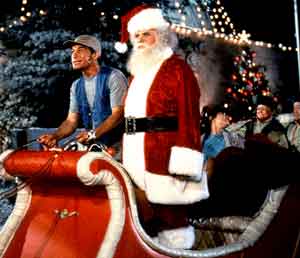 The film, initially conceived in 1978, had a budget of $50 million, an extremely princely sum in ‘85 (HEAVEN’S GATE, which is widely viewed as the epitome of eighties-era Hollywood overspending, only cost $44 million). Its final haul, alas, was just $23.7 million, rendering SANTA CLAUS one of the decade’s biggest cinematic calamities. Its main perpetrators were the late Alexander Salkind and his son Ilya, of SUPERMAN: THE MOVIE and its first two sequels, as well as THE THREE MUSKETEERS (1973), BLUEBEARD (1972) and SUPERGIRL (1984). That’s a track record indicating the Salkinds could be successful on occasion, but not always.
The film, initially conceived in 1978, had a budget of $50 million, an extremely princely sum in ‘85 (HEAVEN’S GATE, which is widely viewed as the epitome of eighties-era Hollywood overspending, only cost $44 million). Its final haul, alas, was just $23.7 million, rendering SANTA CLAUS one of the decade’s biggest cinematic calamities. Its main perpetrators were the late Alexander Salkind and his son Ilya, of SUPERMAN: THE MOVIE and its first two sequels, as well as THE THREE MUSKETEERS (1973), BLUEBEARD (1972) and SUPERGIRL (1984). That’s a track record indicating the Salkinds could be successful on occasion, but not always.
About the Salkinds SUPERMAN: THE MOVIE director Richard Donner had this to say: “The sickness of these people is that they think everybody is out to kill them. Eventually I guess everybody is.” They were known for shady dealings and excessive spending (it’s been claimed that the final price tag for SUPERMAN, in its day the costliest movie ever made, has never been disclosed). The production difficulties, withheld payments and renegade directors’ cuts that accompanied so many Salkind projects didn’t seem to occur on SANTA CLAUS, and Alexander and Ilya followed it with yet another mega-budgeted disaster in the form of CHRISTOPHER COLUMBUS: THE DISCOVERY (1992).
In truth SANTA CLAUS: THE MOVIE, which was released on November 27, 1985, really should have done better than it did. Its major competitors included ROCKY IV, OUT OF AFRICA, THE JEWEL OF THE NILE, ENEMY MINE and THE COLOR PURPLE, none of which can be described as Christmas or family fare, as well as two films, STARCHASER: THE LEGEND OF ORIN and ONE MAGIC CHRISTMAS, that may well have drawn away some of SANTA CLAUS’ intended audience. Still, though, the movie pretty much had the family field to itself (ONE MAGIC CHRISTMAS being widely renowned as perhaps the most depressing Christmas movie ever made), and also a bonafide movie star in its cast.
In truth SANTA CLAUS: THE MOVIE, which was released on November 27, 1985, really should have done better than it did.
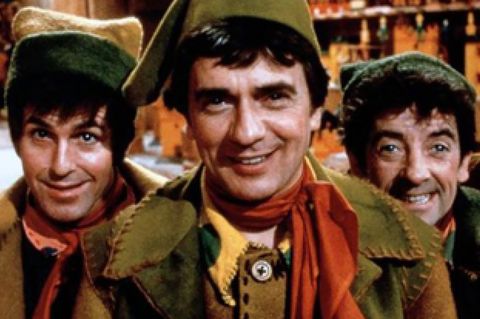 A longtime Salkind movie trademark was the presence of one or more slumming stars, be it Richard Burton in BLUEBEARD, Marlon Brando in SUPERMAN and CHRISTOPHER COLUMBUS: THE DISCOVERY, or Faye Dunaway and Peter O’Toole in SUPERGIRL. For SANTA CLAUS that star was Dudley Moore. A word about “Cuddly Dudley:” the late Dudley Moore was to early 1980s Hollywood what Russel Brand and James Corden are to modern-day Tinseltown.
A longtime Salkind movie trademark was the presence of one or more slumming stars, be it Richard Burton in BLUEBEARD, Marlon Brando in SUPERMAN and CHRISTOPHER COLUMBUS: THE DISCOVERY, or Faye Dunaway and Peter O’Toole in SUPERGIRL. For SANTA CLAUS that star was Dudley Moore. A word about “Cuddly Dudley:” the late Dudley Moore was to early 1980s Hollywood what Russel Brand and James Corden are to modern-day Tinseltown.
A musically-inclined British comedian who initially made his name on the stage and in television (alongside longtime comedy partner Peter Cook), the likeable and unassuming Mr. Moore became a most unlikely Hollyweird star and favored talk show guest after headlining the mega-hits 10 (1979) and ARTHUR (1981). Unfortunately his subsequent roles, in non-hits like ROMANTIC COMEDY, UNFAITHFULLY YOURS, MICKI AND MAUDE, LIKE FATHER, LIKE SON and CRAZY PEOPLE, caused Moore’s Hollywood profile to dim to the point that, at the time of his 2002 demise, few people outside his native England seemed to remember him.
SANTA CLAUS: THE MOVIE had the misfortune to be released around the point that public disinterest in Moore began setting in. But then again, his role in the movie, as an elf (rendered convincing by Moore’s 5’2 height) named Patch who gets roped into a plot to take down his employer Santa C., was not among his better screen performances. Hopefully he was well paid.
Another unfortunate participant was director Jeannot Szwarc (in place of the Salkinds’ initial choice John Carpenter), who after scoring a hit with JAWS 2—and a cult favorite with SOMEWHERE IN TIME—had the great misfortune to board the Salkind train. Szwarc’s first film for them was SUPERGIRL, which Szwarc claims was crippled by last-minute rewrites demanded by Warner Bros., who then abandoned the film (which was ultimately distributed by Tri Star). Szwarc signed onto SANTA CLAUS: THE MOVIE while editing SUPERGIRL, and had it completed within a year of the latter’s release. Such haste in service of a project as ambitious as SANTA CLAUS probably explains (in part) why the movie turned out as it did—and why Szwarc has in the ensuing years been relegated largely to the episodic television field.
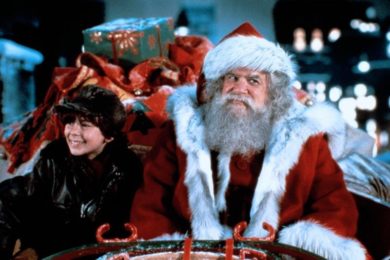 We can also lament the presence of screenwriter David Newman, a once-respectable scribe whose credits include BONNIE AND CLYDE and THERE WAS A CROOKED MAN. As with Szwarc, Newman’s career doesn’t appear to have survived this movie, which, arriving on the heels of the equally disastrous SHEENA (1984), ensured that his only subsequent major credit was on a Michael Jackson video.
We can also lament the presence of screenwriter David Newman, a once-respectable scribe whose credits include BONNIE AND CLYDE and THERE WAS A CROOKED MAN. As with Szwarc, Newman’s career doesn’t appear to have survived this movie, which, arriving on the heels of the equally disastrous SHEENA (1984), ensured that his only subsequent major credit was on a Michael Jackson video.
About the best I can say for SANTA CLAUS: THE MOVIE is that it (unlike SUPERGIRL) isn’t terrible. It would probably be more enjoyable if it was, because it comes off as bland and impersonal. Szwarc tries to impart all the standard Christmas movie messages about the evils of greed and the commercialization of the holiday (things Hollywood loves to preach about but doesn’t actually believe), which fall flat. Even the gooey kid movie sweetness that suffuses the proceedings feels calculated and insincere (say what you will about IT’S A WONDERFUL LIFE and MIRACLE ON 34th STREET, but their schmaltz was genuine).
The film’s first half, detailing how Santa Claus came to be, is dull, and the second, dominated by an over the top John Lithgow as a corrupt toy tycoon who wants to create a “Christmas 2,” is plain stupid. Furthermore, the wildly elaborate set design, constructed in England’s fabled Pinewood Studios, and bluescreen-heavy special effects, which utilized the same techniques that went into SUPERMAN’S flying scenes, don’t seem too impressive these days—although in truth (speaking as one who sat through this movie in a theater) they weren’t terribly eye-catching in 1985, either.
In the title role the late David Huddleston, a veteran supporting player who in his day worked with Roman Polanski and the Coens, acquits himself reasonably well, which makes it all the more vexing that Szwarc devotes so much screen time to Lithgow’s scenery chewing. Also featured is Burgess Meredith as an “Ancient Elf” who grants Santa immortality (a role that was reportedly offered to James Cagney and Fred Astaire) and two Hollywood Stepford Children: Christian Fitzpatrick as the requisite Oliver Twist stand-in and Carrie Kei Heim as the impossibly sweet nephew of Lithgow’s villain, who make one realize that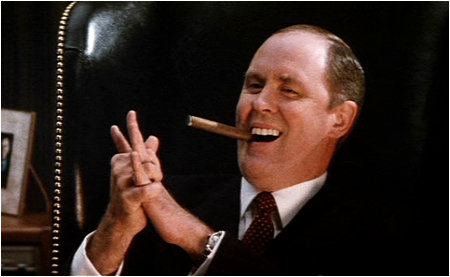 much of the appeal of A CHRISTMAS STORY was the fact that its prepubescent protagonists behaved like actual children, and not the unconvincing grown-up interpretation of childhood on display in SANTA CLAUS: THE MOVIE.
much of the appeal of A CHRISTMAS STORY was the fact that its prepubescent protagonists behaved like actual children, and not the unconvincing grown-up interpretation of childhood on display in SANTA CLAUS: THE MOVIE.
One more thing: this movie was evidently intended as the first entry in a projected SANTA CLAUS franchise. That places it in the company of the aforementioned SUPERGIRL, whose many taglines included “The Legend Begins…” and “Her First Great Adventure,” as well as the same year’s ADVENTURES OF BUCKAROO BANZAI ACROSS THE EIGHTH DIMENSION, whose concluding scenes actually promised a sequel (to be called BUCKAROO BANZAI VERSUS THE WORLD CRIME LEAGUE).
Taking the wannabe-franchise angle a bit further, there were the 1985 releases EXPLORERS and YOUNG SHERLOCK HOLMES, which both contained endings that blatantly set the stage for sequels, and also REMO WILLIAMS, whose ambitions were telegraphed by its subtitle THE ADVENTURE BEGINS. Those hoped-for further adventures were in all cases curtailed, due to the fact that the movies in question, as with SANTA CLAUS, flopped mightily (although in fairness, a much more successful 1985 movie, BACK TO FUTURE, whose cable TV airings concluded with the slogan “To Be Continued…,” got the hoped-for franchise treatment). This would seem to impart a stern “shouldn’t-count-one’s-chickens-before-they-hatch” lesson that Hollywood would have done well to heed but didn’t, and probably never will.
